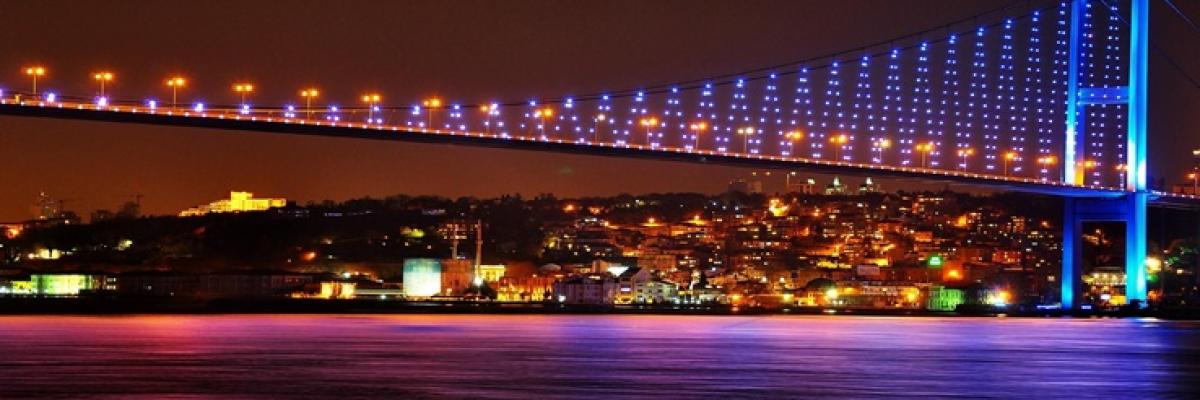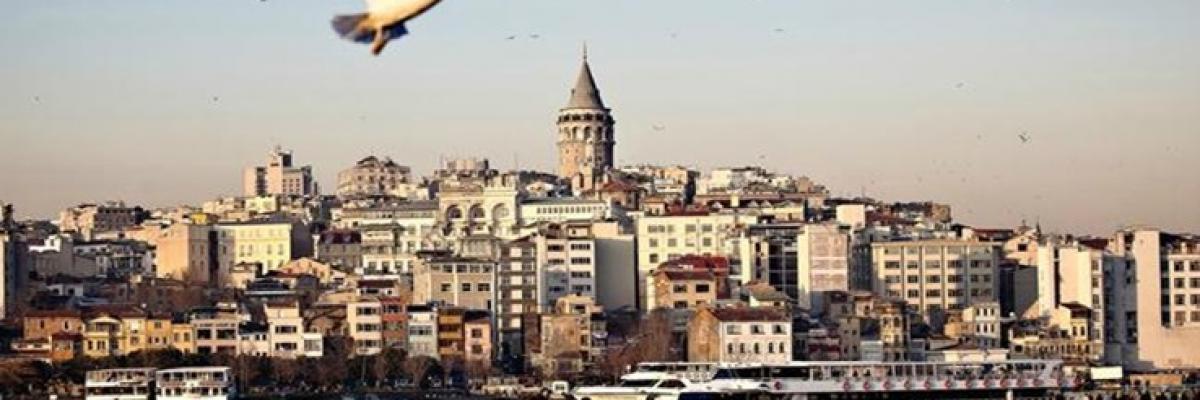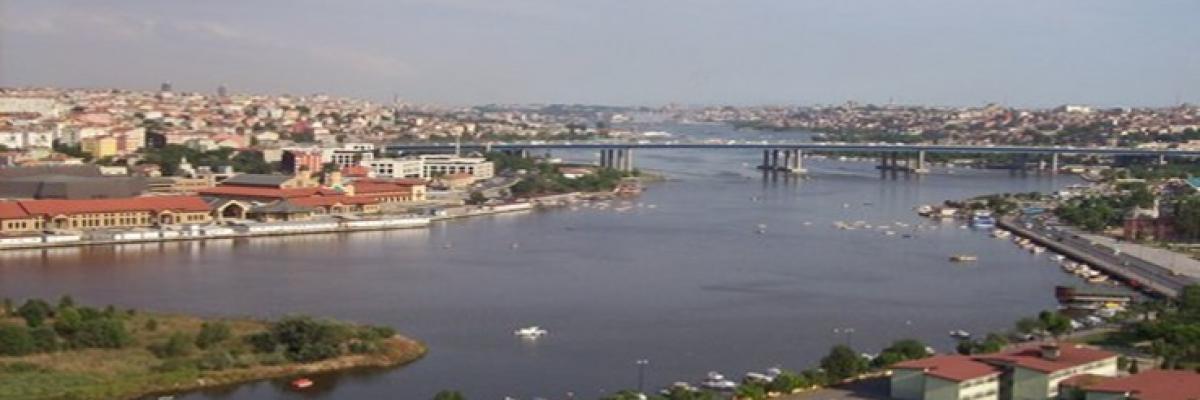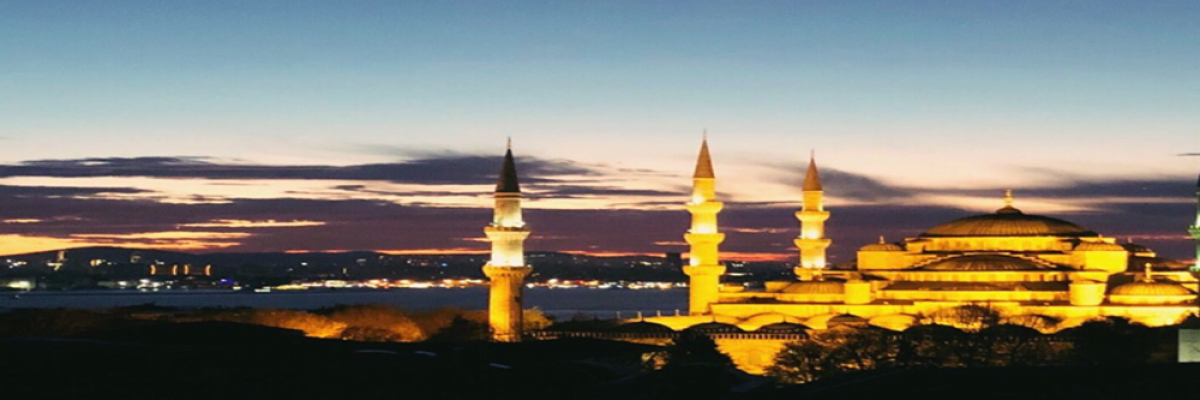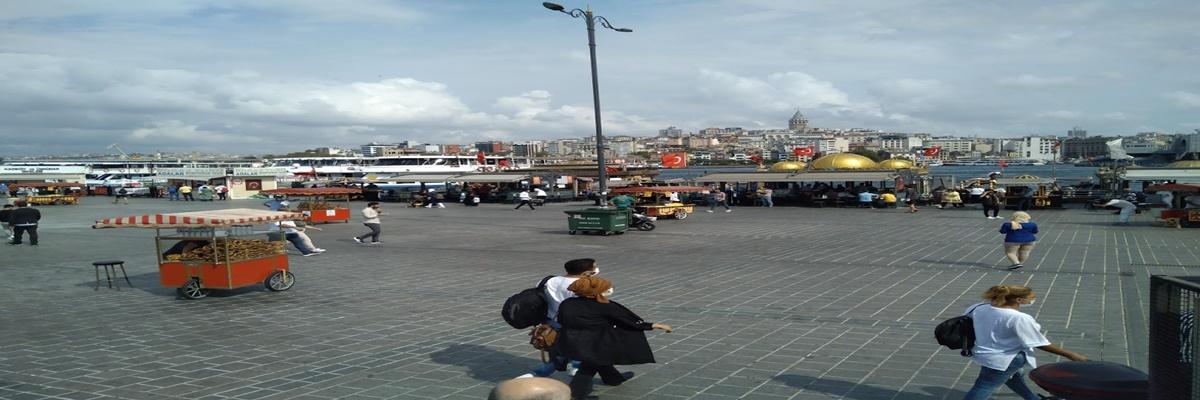Brasil
BRAZIL
Brazil, or officially the Federal Republic of Brazil, is the largest and most populous country in South America, covering almost the entire center and northeast of the continent.
The capital of Brazil is Brasília.
It has a long coast to the Atlantic Ocean. Neighbors; Uruguay, Argentina, Paraguay, Bolivia, Peru, Colombia, Venezuela, Guyana, Suriname, French Guiana. It is not only bordered by South American countries, Ecuador and Chile.
The colors in the Brazilian flag do not represent the forests and mines, contrary to popular belief, but the Royal families that served in the past.
In Brazil, which consists of 26 states, the president, deputies, senators, governors, mayors, state and city councils are elected by elections held every four years.
In Brazil, under the influence of the tropical climate, which is the South American climate, summers are extremely hot in the east and northeast, and winters are in the coastal regions with temperatures up to 20 degrees.
It has a long coast to the Atlantic Ocean. Neighbors; Uruguay, Argentina, Paraguay, Bolivia,

Life in Brazil
Brazil is one of the largest countries in the world, covering almost the entire central and northeastern part of the South American continent, with a population of 200 million, hosting a wide variety of cultures. Brazilian race; It consists of a mixture of Indian, black and white races and this mixture has also been reflected in the culture. Countries such as Portugal, France and the Netherlands have also been an important factor in the formation of Brazilian culture. The types of art such as music, literature and painting were also affected by this cultural richness and life in Brazil was colored with this diversity.
Language
Its official language is Portuguese. Because Brazil is an old Portuguese colony, it has been influenced by Portugal in the choice of language and religion. However, the Brazilian language and country culture has also received immigrants from Africa, Europe, and even the Middle East and Asian countries, and has been shaped by the culture brought by the immigrants. According to the regions of Portuguese spoken in Brazil; They differ greatly in dialect, accent and slang words.
Population
Life in Brazil is concentrated in 13 cities with a population of over 1 million. The largest of these cities are São Paulo and Rio de Janeiro. In addition to being named as the largest city in South America, São Paulo is also one of the country's major industrial centers.
Rio de Janeiro is another important city known all over the world with the "Rio Carnival" and contributing to the country's economy with its tourism income. And undoubtedly, life in Brazil exhibits its most colorful images during the Rio Carnival.
Climate
Brazil is geographically located within a tropical climate. The observed air temperature in the country does not exceed 40 degrees and the summer season is constantly experienced except for a very short period. The Amazon - Rain Forests, which determine the climate, also contribute to the formation of natural beauties.
Education
In Brazil, 8-year compulsory education is provided free of charge by public schools. For those who want to continue higher education, besides public schools, private schools are also active.
Sport
Sports and especially football affect the lifestyle in Brazil very intensely. The 180,000-seat Maracanã Stadium built in Rio shows how important football is for Brazilians. The passion for football is for the Brazilian people to form a team when they find the appropriate time and place, and to play football in the streets, regardless of the young and old.
Brazil, the only country that has participated in all the World Cups to date, has won five championships in 18 World Cups.
In addition to football, volleyball, basketball, tennis, swimming, beach volleyball, surfing, auto racing and sailing are the sports in which Brazil has achieved success worldwide. Capoeira are folk events that attract attention all over the world, especially the African culture of the country.
Art
The Portuguese style that has developed since the mid-17th century is seen in architecture, sculpture and painting in Brazil.
The Coskun Baroque style was completely separated from the European Style during the formation period, and the Afro-Brazilian influence developed. Whites, blacks, and hybrids Brazil's painters, sculptors, architects, draftsmen and musicians made up the most creative group of artists in the South American continent.
With the emergence of popular styles such as baroque, classical, contemporary, abstract, figurative, carnival influenced or close to the public, different styles have also emerged in art. In various fields from this main view; A rich culture was born in architecture (Oscar Niemeyer), painting (Cândido Portinari), music (Heitor Villa Lobos), literature (Jorge Amado) and cinema (Glauber Rocha). The influence of Spanish boleros and African music is seen in Brazilian music.
Kitchen
When it comes to Brazilian Cuisine, a national cuisine does not come to mind. Because Brazilian cuisine is also influenced by the same cultural mosaic. Every ethnic group that came to Brazil with the migrations added new dishes to Brazilian cuisine by adapting their eating habits and cuisines with the food grown in the Brazilian soil. However, locals prefer rice and bean dishes prepared with meat, chicken or fish.
Brazilian cuisine is another mosaic created by gathering local cuisines, which is more diverse in every region. For example, Portuguese people preferred olive oil, cod and garlic, while Africans did not give up their spices.
There are also dishes that are well known throughout this great country and are cooked at least once a week in every Brazilian family.
One of them, "feijoada", which means bean, is cooked with tomato paste pork, beef and kidney beans. This meal is served as lunch in all restaurants every Saturday. Brazilians, who usually eat rice, beans, dried meat and cassava throughout the week, have made it a custom to eat feijoada, which is difficult to digest, on Saturdays.
No matter how important fish and other seafoods are in Portuguese cuisine, Brazilians cook thousands of dishes using only crab, lobster and shrimp in their kitchens. They are not very popular with other seafood. Only in coastal areas fried fish, squid and octopus are commonly consumed.
Religion
Approximately 81% of the population is Catholic, 18% Protestant, and 1% Muslim and Jewish.
Brazilian Economy
Brazil is the country with the largest and most diverse industry in the Latin America and Caribbean region. Brazilian economy, agricultural products grown in the country (coffee, soy, sugarcane, cocoa, rice, cocoa, corn, orange, cotton, wheat, tobacco), live animal products (meat, chicken meat), wood products (paper, pulp) has a global comparative advantage in leather and footwear and mineral and metal products (iron-steel and aluminum).
As a result of the liberalization efforts in the 90s, significant developments have been achieved, especially in the automotive industry and infrastructure modernization, thanks to privatization and foreign direct investments. The Brazilian economy, which has increased its product range, still maintains its relatively closed economy. As of the second half of 2009, signs of recovery have been observed in the Brazilian economy, and it is estimated that the growth rate in 2011 will be 4.6%.
The fact that more than 20 million Brazilian citizens left the "poor" category and nearly 30 million people were included in the middle class was a positive development for Brazil, whose economy relies heavily on domestic consumption.
The Lula Government, which succeeded in paying its debt to the IMF completely and ahead of time at the end of 2005, made history as the first Brazilian Government to transfer funds (10 billion dollars) to the IMF in 2009.
Brazil, which survived the global economic crisis with relatively little damage, closed the year 2010 with a trade surplus, despite losing foreign trade. The trade surplus in 2010 was recorded as USD 20.3 billion, which is 19.7% lower than the trade surplus, which was recorded as USD 25.3 billion in 2009.
While the government works on measures to prevent this trend, the trade surplus in 2011 is expected to be even lower. The biggest problem in Brazil, the country with the largest economy in Latin America, the 10th largest economy in the world according to the IMF and the 8th largest economy according to the World Bank, is the deep income, education and quality of life difference between social classes and violence / public order problem. According to the UNDP report, Brazil is the 7th country in the world with the most unequal income distribution.
Brazilian-Portuguese
In the first year of the 16th century, when Pedro Alvares Cabral, a Portuguese sailor, set off for India and accidentally came to South America and discovered Brazil, Brazilian natives were speaking tupi-guaranice. Old Brazilian language; It is a subfamily of Tupi languages in South America and includes more than 10 groups of languages. The most well-known groups are Tupi and Guarani.
In Brazil, until the middle of the 18th century, families continued to speak this tupigari language among themselves. The Brazilian language spoken among the people began to change over time, due to the colonists coming to the country and settling down and the indigenous people to coexist with immigrants in common areas or to marry them. With new words, phrases and expressions added from Portuguese and African languages, the Brazilian language has constantly evolved and diversified in itself.
In the middle of 1758, the speaking and teaching of the Tupi-guarani language was completely banned by the colonists who ruled. The main purpose of this ban, which will last for many years, was to increase the use of Portuguese. Today, the Brazilian language is officially Portuguese. However, there are great differences in dialect, accent and slang words by region. Although it has been an intensely Portuguese-speaking country for many years, it is a known fact that the names of many states and cities in Brazil are still tupi-guaranice.
Brazil, a former Portuguese colony, is also the largest geography where Portuguese is spoken, both in terms of surface area and population. Apart from Portuguese, Portugal and Brazil, which is the 5th most spoken language in the world, it is spoken in 8 more countries in Africa and Asia. Due to the recent economic growth of Brazil and trade agreements made with friendly countries, Portuguese has become one of the languages whose importance is increasing day by day.

Brazilian Culture
Brazil is one of the largest countries in the world, covering almost the entire central and northeastern part of the South American continent, with a population of 200 million, hosting a wide variety of cultures. Brazilian race; It consists of a mixture of Indian, black and white races and this mixture has also been reflected in the culture. Countries such as Portugal, France and the Netherlands have also been an important factor in the formation of Brazilian culture, and music, literature and painting were also affected by this diversity.
Picture
African and Native American motifs, vibrant and bright colors of tropical regions have influenced the styles of Brazilian artists. The first names prominent in painting are masters such as Manuel da Costa Ataide, Antonio Francisco Lisboa and Aleijadinho. While experiencing the culmination of their arts, they also contributed to the development and consolidation of the Brazilian style. Candido Portinari is one of the most important artists of the modern period, which Brazil has grown. In recent years, Romero Britto, one of the Pop Art representatives, has been followed with interest by art lovers all over the world.
Music
Carmen Miranda, a Brazilian of Portuguese descent who lived between 1909-1955, is an important name in Brazilian culture with the title of "the first musician from Brazil". In classical music, Carlos Gomes and Heitor Villa-Lobos are among the most well-known names.
The most popular music of Brazil is Samba. It is the most popular of the different styles of music created by the African origin. It is estimated that Samba got its name from the traditional music genre of Angola, "mesemba". It is known that the black race in the Bahia region, which migrated to Rio de Janeiro in the 20th century, developed to distinguish themselves from other races.
The "Bossa Nova", presented to the public by a group of students from Rio in 1958, made an ambitious breakthrough and soon spread to the world, wanting to be the new style of Brazilian music. Tom Jobim and Vinicius de Moraes are among Bossa Nova's best-known composers. The fact that one of the two airports of Rio de Janeiro is named Tom Jobim today shows the value given to Bossa Nova in Brazil.
Literature
Marchado de Assis, Euclides da Cunha, Jorge Amado and Paulo Coelho are among the important names of Brazilian literature. Jorge Amado's works have been translated into over 40 foreign languages, including Turkish. The most well-known author of the last period is undoubtedly Paulo Coelho. In Turkey, The Alchemist, The Fifth Mountain, and By the River Piedra I Sat Down And Wept Coelho is known for his works, after the Portuguese edition of his latest novel Elif completed, he wanted first to be translated into Turkish. The main character of the novel is an extraordinary Turkish girl named Hilal who is a writer and a talented violin virtuoso. The experiences and confrontations he made with himself during his journey in Siberia are described. Turkish artist Raif Kurt won the competition for the promotion of the book with the video he prepared.
Sport
Brazil has added very important players to the world of football so far and continues to do so. The importance of football for the public in the country is undeniable. There is hardly any Brazilian who is not interested and disliked in football. So much so that every neighborhood has an established football team.
In addition to football, where he is the world champion five times, volleyball, basketball, tennis, swimming, beach volleyball, surfing, auto racing and sailing are other sports in which Brazil has achieved success worldwide.
In addition, Capoeira and Samba are folk events that attract the attention of the African culture of the country all over the world.

Rio de janeiro
When it comes to a trip to Brazil, the first place on the list should be Rio de Janeiro, also known as the City of God. Rio is Brazil's second largest city. It has many features that make it famous all over the world, two of which we can say are the Christ the Redeemer Statue and the Maracana Stadium. Rio Carnival is celebrated every year in the city of Rio, also known as the capital of festivals. As part of the carnival, Brazilian dances, spectacular shows of samba schools and street entertainment can be watched. Rio Carnival has been held in February every year since 1840. This season, millions of recreational travelers come together.
We recommend you to see Sugar Loaf Mountain as the first stop of the city tour. When you climb to the summit of Sugar Sugar Mountain, one of the two most important hills in the city, you will see that the whole city of Rio de Janeiro is under your feet. To reach the top of the mountain, you will need to take a cable car that makes two stops. The first stop is the city view in Urca, but after a little rest, continue on to the summit, even if the city view shook you immediately. When you reach the top, you will see that it is well worth it, especially if the weather is clear.

Brazil Jesus Statue
Corcovado Hill, the most important hill of the city, is another place where Rio looks best. You have to come to this hill, which is more than 700 meters high, for another reason. The world famous Christ the Redeemer Statue is here! This statue is by far the most important stop on the list of places to visit in Rio De Janeiro. The statue, the symbol of the city, has a height of 30 meters. If you do not want to go to Corcovado Hill on foot, you can easily reach it by train services between 08.00 and 19.00 every day. When you reach the top of the hill, besides the magnificent view of the city, the wonders of Rio such as Sugar Loaf Mountain, Maracana Stadium, Guanabara Bay will be right in front of you.
For those who come to Rio, Rio de Janeiro beaches should be seen as soon as possible. Rio is truly a city of beaches. Beaches stretch for miles and everyone is constantly enjoying the ocean and sand. The Rio tour would not be complete without seeing these three world famous beaches:
Brazilian beaches
Copacabana Beach: Copacabana Beach, the most famous beach in Rio, lies in the south of Rio by the shore of Cut Sugar Mountain. Here you can enjoy the sun on the clean beach, swim, watch those playing beach soccer or beach volleyball, or even join games if you want. The answer to the question of where to swim in Rio will therefore be Copacabana Beach by far. After all, we are talking about a beauty that has adorned postcards for years.
Leme Beach: The main difference of Leme Beach, which can be considered as an extension of Copacabana Beach, is that it is mostly preferred by families. On this occasion, let's emphasize that other beaches are more fun-oriented and appeal to young people. You will often come across cyclists, skateboarding and skating along Leme Beach, which is shown as the best spot to watch the sunset in Rio.
İpanema Beach: Here is a beach whose fame has spread all over the world with its roles in postcards, television series and movies. If not from nowhere, you can remember this beach, one of Brazil's most interesting corners, from the song Girl From Ipanema. This place is famous for sports activities during the day and parties in the evenings. So do not just call it the beach, it is also a critical point for Rio de Janeiro nightlife. By the way, let's say that as in almost all of South America, parties here, once started, do not end before morning.
Barra Beach: Barra Beach, which is the longest of the beaches in Rio, is the most preferred place for surfing lovers. There are many surf schools on the shore of Barra Beach, where dozens of surfing enthusiasts fight against the waves, from masters to novices.
We continue with the football shrine Maracana Stadium, with the next stop you can choose for the Rio De Janeiro tour. The spectator capacity of Maracana Stadium, which was built for the 1950 World Cup, was once more than 200 thousand. However, the capacity of the stadium has been reduced to 95 thousand for security reasons. You can visit the Maracana Stadium as a tourist attraction, and if you can find it, buy your ticket and watch the match.

Sao Paulo
Known as South America's largest city with a population of over 12 million, Sao Paulo was founded in 1554 by Portuguese Catholic Priests. Today it is an extremely touristic city.
Sao Paulo Cathedral is at the top of the list of places to visit in Sao Paulo. Standing out with its neo gothic design, the cathedral stands out as the city's largest sacred place. The 111-meter-long, 46-meter-wide building was built in the 17th century.
In order to experience the coffee culture of Brazil, you have to turn your route towards Mercado Municipal, ie the market. The market, which has 319 stalls that welcomes 20 thousand customers a day, is designed in a way that can be defined as neo-classical. Especially the pasta makers on the first floor of the market are extremely famous. Mortadella sandwiches are also among the legendary flavors.
The Memorial do Imigrante Museum, on the other hand, houses the history and legacies left by immigrants in the country. An interesting Immigrant Festival is held at the museum in June every year. The Sao Paulo Art Museum, located on Paulista Avenue, the city's most famous street, is also among the places to see in Sao Paulo.
Luz Train Station, which is among the symbolic structures of the city, was built in the 19th century. It is not a station used as much as it used to be today, but it is a must-see place.
Edifício Itália Skyscraper is one of the preferred panoramic viewpoints to watch the city. In fact, there are many hills in Sao Paulo that can be preferred to watch the city, and Edifício Itália has a special place among them.
Ibirapuera Park is the greenest and most central park of the city, which we see similar in European cities and South American cities. There are walking, running and cycling tracks in this 1.5 million square meter park. You will see different buildings such as the Modern Art Museum and the Biennial Exhibition Center in the park, where more than 150 thousand visitors come on weekends.

Porto alegre
Porto Alegre is the capital of Brazil's Rio Grande do Sul state. It is a very large city with a population of 1.5 million. Founded by the colonists in 1742, this city has become one of the cultural, economic and political centers of the country today. There are many historical buildings and natural areas in the city. In addition, Lake Guaiba on the east coast stands out as an important attraction center.
Porto Alegre, whose name means Happy Harbor, is known as a city of culture and arts, as it is very full and developed in terms of artworks and architectural structures. The list of places to visit in Porto Alegre is quite long. The most important of these places you should see is the Palace of Culture. This magnificent building, dazzling with its architecture, is also known as the place where Mario Quintana, one of Brazil's most important poets, lived.
Compared to other cities of Brazil, Porto Alegre has a very colorful and fun nightlife. The city, which is immediately felt to have a different reputation when it comes to Brazilian nightlife, hosts its guests as well as countless bars and discos. Therefore, no night passes idle and still here. If you care about nightlife, Porto Alegre should definitely be on your list of places to see in Brazil.
Salvador Da Bahia
The city, known as Salvador, Bahia or Salvador, also known as Bahia, is the capital of the state of Bahia in northeastern Brazil. It gets its fame from outdoor parties and carnivals.
Most of the people living in the city are of African descent. So here, both traditional Brazilian dances and South American styles of African dances are exhibited with all their examples. With its cosmopolitan structure and cultural richness, the city is also called the capital of music, rhythm and dance. In addition, Bahia is known as one of the oldest cities in the New World, namely the American continent. For this reason, the city was included in the UNESCO World Heritage List in 1985.
Foz De Iguaçu
Foz do Iguaçu is a city in the Brazilian state of Paraná. What makes this city interesting and popular is that it is home to one of the World's Largest Waterfalls, Iguazú Falls, which flows into the borders of Brazil, Paraguay and Argentina.
Porto De Galinhas
Porto de Galinhas is a wonderful beach located on the border of the Brazilian state of Pernambuco. This beach has been repeatedly chosen as the most beautiful beach in Brazil by travelers and world-famous travel magazines. The main attraction of the beach, which is home to many natural pools, is that tropical fish swim around you without paying attention to you. We can guarantee that you will be captivated by the clarity of water and the beauty of nature.
Brazilian Cuisine
Empanada: Empanada, a tiny type of pie spread throughout South America. It resembles our puff pastry and has seafood, cheese, minced meat or chicken varieties.
Chourasco: The national dish of Brazilians, chourasca is a type of grill. A wide variety of meats are cooked on an open fire. Meat consumption is very common in Brazil, locals always eat meat cooked on barbecue at least once a week. Meat restaurants called Churrascaria are common and all kinds of red meat are found here.
Coxinha: We could say it's the Brazilian's stuffed meatballs. It contains chicken and some kind of cream cheese.
Feijoada: Brazilian stew made with black beans, beef and pork. There are many different types of feijoada and each day of eating is also different. Cabbage, rice and farofa are served with it. Farofa is made by roasting cassava flour, egg and butter together and mixing them with bananas.
Cassava: One of the snacks, cassava is made from the cassava plant. The plant, which tastes like a potato, is served fried. Anything made with potatoes can also be made with cassava.
Information About Brazil
Where comes Brazil at the top of the interesting but curious questions. Brazil is located on the Atlantic Ocean coast in South America. It is the largest and most populous country in the continent.
Contrary to popular belief, the capital of Brazil is Brasilia, not Rio. The official language of Brazil is Portuguese.
There are not many people in the country who speak English. It can make sense to learn certain Portuguese words and phrases before you go. In addition, Spanish is also spoken, although not spoken, it is understood to a large extent.
Do you need a visa to Brazil?
Republic of Turkey passport with a tourist who travels up to 90 days do not need a visa to Brazil.
How much is the time difference in Brazil?
In GMT-2 time zone, our time difference is -5 hours. Brazil, five hours behind Turkey. You are likely to experience jetlag, be prepared.
How to go to Brazil?
Brazil's largest industrial city of Sao Paulo is done via direct flights from Turkey Turkish Airlines. Direct flights from Istanbul take about 14 hours.
When should you go to Brazil?
Turkey and Brazil weather is inversely proportional. seasons as located in the South American country is watching Turkey's format and vice versa. Summer from December to February. If you are planning to attend festivals and have a sea holiday, December and March will be the ideal time for this type of travel. The world famous Rio Carnival is held in February. Let us remind you that all prices, especially accommodation and transportation to the country, peaked in Brazil during the Rio Carnival. If you want to experience the carnival, it is a good idea to make your reservation and your plan early.
What should be considered in terms of health when going to Brazil?
The Zika virus, which has been on the agenda in Brazil for the last few years, may pose a risk, especially for those who will visit the world-famous Iguazu Waterfall. Zika, which is transmitted by mosquitoes, poses risks that should be taken seriously, especially in pregnant women. Take care to keep and use fly and insect repellent sprays for protection. In addition, if you are going to dive into the Amazon Forest and participate in nature-themed activities intensely, it is strongly recommended that you take precautions against malaria. Fly repellent sprays will be your assistant in this regard. In any case, it would be beneficial to check whether there are any problems during your visit to Brazil or whether the risks we mentioned are valid.
